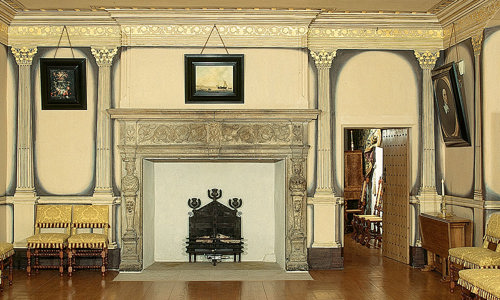History
An exceptional cross-slab
The Fowlis Wester Sculptured Stone stands 3m tall, and is made of red sandstone. It stands in Fowlis Wester Parish Church. A replica stands in its previous location in the Fowlis Wester village square. It’s believed the stone originally stood at St Beoan’s Chapel in Buchanty, though we don’t know when it was first moved.
It’s unique in that the cross carved in relief on one face has arms that project 5cm beyond the sides of the slab. This is enough to give it the impression of a free-standing cross – the only known example of its kind in Great Britain.
Mysterious scene
The reverse face is also unusual. The panel contains, from the top:
- a double-disc and Z-rod Pictish symbol
- a horseman
- a beast
- two horsemen riding abreast
- a cow with a bell around its neck, being led by one man and followed by a procession of six other men
Below the procession is a V-rod with a bird. The very bottom of the stone depicts a man being devoured by a beast.
Two beasts, one of which is devouring a man, may seem interesting, but they’re not the most unusual aspect of this scene. It’s the man leading a cow which is exceptional: no other Pictish stone bears this image.
Legacy of the Picts
We don’t know a lot about the Picts, the descendants of Iron-Age tribes who occupied the area north of the Forth and Clyde estuaries in the first millennium AD. They left about 200 carved stones scattered across the country. The earliest of these stones, such as the Brandsbutt Stone, date to about AD 600 and display a variety of enigmatic symbols.
The Fowlis Wester Sculptured Stone, probably erected in the AD 700s or 800s, belongs to the later group of Pictish stones, which were more overtly Christian. These were cross-slabs, where ornamental carving is dominated by the Christian cross.
















